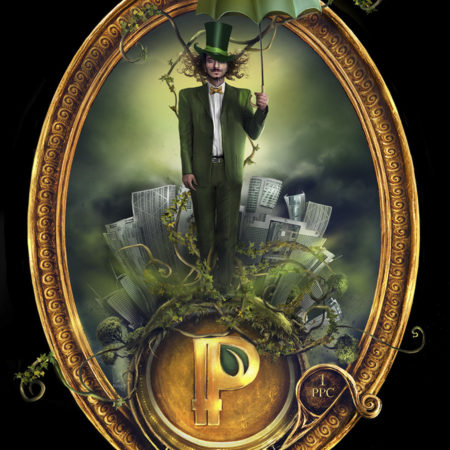I confess, I kind of love this.
Bitcoin can be a work of art – literally.
Troy Fearnow, a resident of The Woodlands, is selling images designed to “store” bitcoin and other digital currencies, which are like digital cash. His goals are threefold: keeping currencies away from hackers, creating collectibles that can be saved, traded and fetch more money – and nourishing a broader conversation on digital money.
“This creates awareness. This creates discussion,” Fearnow said. “In addition, it’s rare that art has functional utility.”
He launched Cryptoart.com in late March, and it became his full-time gig about two months ago. He recently displayed artwork at the George R. Brown Convention Center during the unveiling of Houston’s first bitcoin ATM.
Cryptoart.com was born from Fearnow’s passion for bitcoin, a love of technology and his experience selling art online.
“I thought it’d be exciting to incorporate money, technology and art into a physical product,” he said.
Think of the artwork as a savings account, minus the interest. It’s a place to keep digital currency not needed on a day-to-day basis.
Here’s how it works. Each piece of art has a Quick Response – or QR – code in the bottom left corner. This QR code, using bitcoin as an example, is scanned with a smartphone to send bitcoins to a bitcoin address, which acts like an account to hold the currency. Most users have multiple bitcoin addresses.
[…]
Sheldon Weisfeld, the CEO of CoinVault ATM based in Houston, said the artwork found on Cryptoart.com can be a tool for educating people about bitcoin and other digital currencies.
“I think that what he’s doing is very unique in the whole evolution in the digital currency space,” Weisfeld said.
CoinVault ATM has seven bitcoin ATMs installed around the country, including the one recently unveiled at the convention center in Houston, and it’s working to add a few more. The majority of its ATMs allow users to convert cash to bitcoin and vice versa.
In general, Weisfeld said, people struggle to grasp the concept of digital currency because it’s intangible. Relating it to art gives consumers something tangible to associate with the currencies.
It’s also a way of getting the currency into offline storage and away from hackers or viruses. Weisfeld suggested other secure ways for storing a private key are on a jump drive or a printed piece of paper stored in a safe.
The cost of a Cryptoart ranges from $35 to $600 (and yes, Fearnow takes digital currencies for purchase as well) and by year’s end he expects that he will have sold 500 pieces of artwork. Some were purchased through Cryptoart.com, while others were sold through a soon-to-be-announced partnership with a bitcoin company.
We are well aware of the Bitcoin ATM. It would be totally awesome if you could use the Bitcoin ATM to deposit or withdraw a piece of Crypotart. Don’t ask me how that would work – I’m the big picture guy, not the details guy. I must say, I’m a little disappointed that Cryptoart.com has nothing to do with steganography, but I suppose that’s the way it is when one is producing for a mass audience. I don’t really have anything else to add here, I just like staying on top of local developments in the Bitcoin world.

